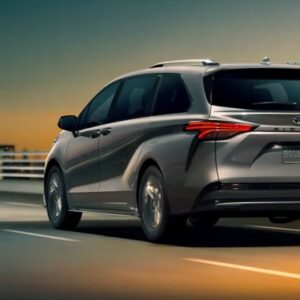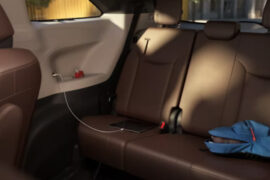Contents
FWD vs AWD Sienna
In the world of automobiles, choosing the right drivetrain can significantly impact your driving experience. Regarding the Toyota Sienna, a popular minivan choice, the decision between Front-Wheel Drive (FWD) and All-Wheel Drive (AWD) can be pivotal. This article delves into the FWD vs. AWD Sienna debate, providing insights and information to help you make an informed choice.
The Toyota Sienna is renowned for its reliability and versatility. However, deciding between FWD and AWD is crucial in personalizing your driving experience. Let’s explore both options to help you determine which one suits your needs best.
FWD vs. AWD Sienna: Understanding the Basics
Front-wheel drive (FWD)
Front-wheel drive in the Sienna is an excellent choice for those seeking traction, fuel efficiency, and interior space in their minivan. However, it’s essential to consider your specific needs and driving preferences when choosing a drivetrain configuration. If you require more towing capacity or specific handling characteristics, consider exploring other options, including all-wheel drive or rear-wheel drive variants.
Advantages of Front-Wheel Drive in the Sienna:
- Traction: FWD vehicles tend to have good traction, especially in wet or snowy conditions. The engine’s weight and transmission over the front wheels provide added grip.
- Fuel Efficiency: FWD drivetrains can be more fuel-efficient than rear-wheel drive (RWD) or all-wheel drive (AWD) configurations because they typically have less drivetrain loss.

- Interior Space: FWD layouts often allow for a more spacious interior since there’s no need for a rear driveshaft or differential, which can intrude into the cabin.
- Cost: FWD systems are generally less expensive to manufacture and maintain, making vehicles equipped with this drivetrain more affordable for consumers.
Considerations for Front-Wheel Drive:
- Handling: While FWD offers good traction, it may not provide the same sporty or dynamic handling characteristics as RWD or AWD systems. Some drivers prefer the rear-wheel-driven feel for performance reasons.
- Towing Capacity: FWD vehicles, including the Sienna, may have lower towing capacities than their RWD or AWD counterparts. Consider a different drivetrain if you require heavy towing capabilities.
- Torque Steer: FWD vehicles sometimes experience torque steer, slightly pulling to one side during hard acceleration. This can be mitigated with advanced suspension and steering systems.
- Weight Distribution: The front-heavy weight distribution in FWD vehicles can affect balance and handling. Manufacturers use various techniques to counterbalance this, such as weight distribution and suspension tuning.
All-wheel drive (AWD)
All-wheel drive (AWD) is a feature in the Toyota Sienna minivan. AWD is a drivetrain system that simultaneously provides power to all four wheels of the vehicle, improving traction and stability, especially in challenging road conditions such as snow, rain, or gravel. Here are some key points about AWD in the Sienna:
- Enhanced Traction:AWD ensures power is distributed to the front and rear wheels, allowing the Sienna to maintain a better grip on slippery or uneven surfaces. This can be particularly useful in adverse weather conditions.
- Improved Handling:AWD can enhance the vehicle’s handling and stability, providing a more confident driving experience, especially when cornering or navigating tight turns.
- Automatic Operation:In many modern AWD systems, like the one in the Sienna, the system operates automatically without requiring driver input. It continuously monitors road conditions and adjusts the power distribution to the wheels as needed.
- Fuel Efficiency:While AWD provides benefits in terms of traction and stability, it may slightly impact fuel efficiency compared to front-wheel-drive (FWD) counterparts. However, this difference is often minimal.
- Versatile Use:The Sienna’s AWD system is designed to be versatile, making it suitable for various driving scenarios, from daily commuting to family road trips and outdoor adventures.
- Safety:AWD can improve safety by reducing the risk of wheel spin and loss of control, especially when accelerating on slippery surfaces.
- Peace of Mind:For drivers who frequently encounter inclement weather or prefer the added security of AWD, the Sienna’s AWD option offers peace of mind and confidence on the road.
AWD is an option available in certain Sienna trim levels. If you’re interested in this feature, inquire about the specific trim packages that offer it when purchasing a Sienna. AWD can be a valuable feature for drivers prioritizing traction and stability in their vehicles, especially in regions with challenging weather conditions.
FWD vs. AWD Sienna: Pros and Cons
Let’s break down the advantages and disadvantages of both FWD and AWD Sienna models:
| Aspect | FWD Sienna | AWD Sienna |
| Fuel Efficiency | Excellent fuel economy | Slightly reduced fuel efficiency |
| Traction in Snow/Rain | May struggle in extreme weather conditions | Offers superior traction |
| Initial Cost | Typically more affordable | Slightly higher upfront cost |
| Resale Value | Generally lower resale value | Higher resale value due to versatility |
| Off-Road Capability | Limited off-road capability | Suitable for light off-roading activities |
Let’s delve into these aspects a bit further:
Fuel Efficiency Example: Imagine you’re planning a road trip, and fuel costs are a significant concern. An FWD Sienna would be the practical choice, ensuring you can go further on a single gas tank, ultimately saving you money on long journeys.
Traction in Snow/Rain Example: Living in a region where snow and rain are frequent, an AWD Sienna becomes indispensable. Whether you’re taking your kids to school or going on a weekend getaway, the extra traction provided by AWD ensures your safety and peace of mind.
Resale Value Example: When it’s time to upgrade your vehicle, an AWD Sienna tends to hold its value better. This means that when you decide to sell or trade-in your minivan, you’ll likely get a higher return on your investment.
Factors to Consider
The decision between FWD and AWD Sienna largely depends on your needs and preferences. Here are some factors to consider:
- Climate: AWD might be the safer choice if you reside in an area with frequent snow or rain. Imagine waking up to a snowy morning and confidently setting out on your daily commute with an AWD Sienna, knowing you have superior traction.
- Budget: FWD models are more budget-friendly and appealing to cost-conscious buyers. Suppose you’re saving for other important expenses, like a family vacation. In that case, a FWD Sienna allows you to enjoy practicality without straining your finances.
- Driving Conditions: Consider your typical driving conditions. If you frequently encounter rough or slippery roads, AWD is advantageous. Picture yourself easily navigating a winding mountain road, knowing your AWD Sienna has your back.
- Resale Value: AWD Siennas have higher resale values due to their versatility. This means that when it’s time to upgrade to a newer model, you can do so confidently, knowing you’ll get a good return on your investment.
- Off-Roading: AWD is the better choice if you enjoy light off-roading adventures. Imagine taking a spontaneous detour on your road trip to explore a scenic trail with your AWD Sienna. It adds an element of adventure to your journey.
Ultimately, weighing these factors against your preferences and priorities is essential. Your ideal Sienna configuration should align with your lifestyle and how you intend to use the vehicle.
Conclusion
In the FWD vs. AWD Sienna showdown, there’s no one-size-fits-all answer. Your choice should align with your needs, driving conditions, and budget. Whether you opt for the fuel-efficient FWD or the all-weather-ready AWD, you’re sure to enjoy the versatility and reliability of the Toyota Sienna.






